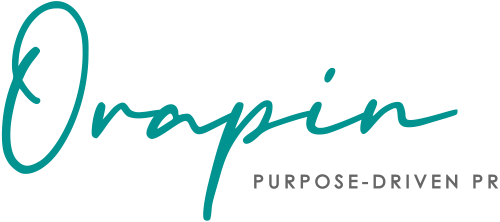
The word “influencer” is a hackneyed term that conjures up images of 20-somethings on TikTok, fitness instructors, foodies, interior designers, extreme sports athletes, moms, and just about anyone who takes the time to parade their life and activities all over the internet. The past few years have shown a collective fascination with these individuals and just how “influential” they seem to be with their ability to sell CPGs, start dance trends, influence style, and get the masses to try/see/do just about anything. The increasing power of influencers encourages examination of what exactly it means to be “influential.”
Beyond pop culture trends, brands, organizations, and individuals have the opportunity to influence society as a whole, in terms of framing or reframing the way we view and talk about the environment, society, social issues, human rights, or any other big picture idea. In the PR world, we like to use thought leadership as a strategy to position our clients as “influencers” in the sense that they influence people to take notice of their cause, have a say in important conversations, and as a result, increase impact. Want to be an influencer who works for the greater good? The good news is that you don’t have to do silly dances on TikTok in order to get noticed, you just need to execute a good thought leadership strategy.
How do you become someone who influences for the greater good?
Share your expertise, advice, perspective, and opinion! As a CEO of a purpose-driven organization, you have a strong passion for and connection to your cause. Whether supporting mental health services, tackling food insecurity, human rights, or access to education, your cause is important, and your job is to positively influence and impact that cause.
While there are millions of Americans eager to scroll through to the next cat video, there are also millions of Americans eager to make a difference and support organizations and individuals who are “doing the right thing.” However, these potential followers and supporters can’t and won’t understand how important your work is, or how great the need is for your cause, unless you tell them.
If you are trying to increase visibility for your cause, it is vitally important to create a platform from which to share your message and capture the attention of the masses. You have the ideas and knowledge to influence national conversations, change narratives, and impact the future. So how do you go about doing it? Get out your megaphone, amplify your voice, and leverage the power of PR to put your cause in the spotlight. For some people, this will mean a speaking tour with an actual stage and TedX talks, for others it means putting the proverbial pen to paper, and for some, it is a full schedule of podcast interviews. Whatever avenue you choose, there are many opportunities to share your thought leadership and to influence others for the greater good.
How do you keep thought leadership as fresh as the latest TikTok challenge?
Your cause is important and your message matters but how do you capture the attention of your current and potential audiences? How do you keep people engaged and interested and motivated to take action? The modern world has many important causes that need attention, how can you make sure your voice and your cause stand out from the crowd?
1. Consistency is key. Being a thought leader and having real influence over your cause requires more than just a byline article here and there. Utilize all platforms and microphones (real and metaphorical) at your disposal. Seek opportunities to share your voice. Do so frequently. Say “yes” to speaking opportunities and podcast interviews. Create content whenever possible including blogs, newsletters, social media content, and byline articles. The more you share your thought leadership, the more people are likely to take notice.
Influence begins to snowball when you create more and more opportunities for engagement and when your voice is continually a part of the conversation. Remember, you never know who is listening to that podcast that may tap you for the next speaking gig. One byline in Forbes often begets another, especially if engagement with your article is high. A speaking gig at your local women’s leadership conference can be the stepping stone to SXSW.
2. Keep the ideas fresh. You know your core message and your cause, but people need to hear more than a constant mantra to “save the whales” or whatever it might be. Find ways to connect with what is happening here and now. Look for ways to tie in your cause to current events and existing conversations. In order to make people care about your important work, they need to see how it ties into things that are happening every day. For example, if your cause relates to food insecurity, May is the perfect time to author an op-ed on the struggle that many children and families face when school lets out for summer and they no longer have access to free lunch.
3. Make it personal. Thought leadership is not just about sharing your thoughts, it is about sharing your “why.” Helping people find a connection to your “why” will help them understand the importance of your cause.
Share real stories about real people. If you are talking in broad terms about mental health it can be difficult for people to find a true connection to your work as there are so many issues and applications. Instead, consider writing a byline for a parenting publication where you share a real-life example of a mom or dad who is struggling with mental health issues and how those struggles affect their ability to be an effective parent. Help your audience find a connection to your cause, tug at their heartstrings, and create a human connection.
4. Help your audience understand your values. You don’t have to be a nonprofit to have a purpose. Many organizations are working to solve the world’s greatest problems simply through their internal value system. For example, you may run a successful B2B company selling a random widget or service, but your unique selling point is your focus on paid family leave for your employees because you believe everyone deserves the right to have both a career and a family. People want and need to hear this message. It is important to share your thought leadership on the topic, you never know when it will inspire other companies to adopt similar policies or how it may attract clients with aligned value systems.
Being a thought leader is more than just doing good work, it is using that good work to influence others and make the world a better place for all.
Influence is more than going viral
Where an Instagram reel is here to today and gone tomorrow, influencing others through thought leadership can have a lasting impact on your cause or your business. Thought leadership enhances your reputation and increases your authority, provides points of differentiation amongst your competitors or peers, builds trust, and increases credibility. Further, it is one of the most effective PR strategies in terms of amplifying your voice and your cause. The more work you put into thought leadership strategy, the greater your potential impact will be.
Photo by Los Muertos Crew from Pexels

Diana Crawford is a seasoned public relations consultant with more than 15 years of agency, consulting, and in-house experience. She joined Orapin in 2013 and manages account services and client communications strategy development. She has worked across a variety of industries and has expertise with professional services, food/alcohol, health and wellness, lifestyle, sports, education, tech, and non-profit organizations.
